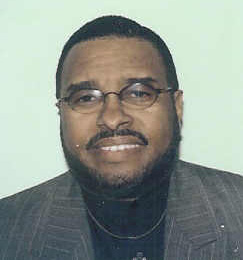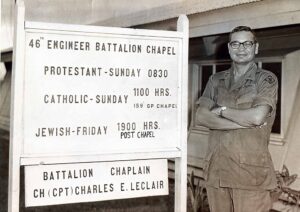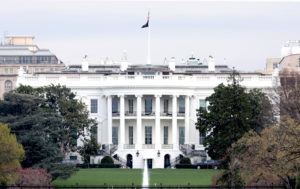
ANCHORAGE, Alaska (BP)–Theirs was the first African American congregation to join the Southern Baptist Convention after nearly a century of separatism, but members of Greater Friendship Baptist Church in Anchorage, Alaska, don’t dwell on their place in history.
Nor do the three other congregations that joined Greater Friendship in the early 1950s in connecting to the SBC.
Each congregation, instead, has focused on what most churches seek — Kingdom growth.
Their stories follow:
Greater Friendship Baptist Church, Anchorage, Alaska
“The main thing I’ve been doing for the five years I’ve been at Greater Friendship,” said Leon D. May, who became the church’s 11th pastor in 1997, “is building ministries and building people and talking about a building and doing some fundraising.” The church, stuffed in its aged facility, bought land in 1993 and paid it off in six years. About $81,000 now is in a building fund.
May led the church in January 1999 to become trained in the FAITH strategy for Sunday School evangelistic outreach and in May 2001 launching a local television ministry. He also started greeters’ and mentors’ ministries and Christian Basic Training, reorganized the Pastor’s Aid Committee and revitalized other standing committees.
“We’ve seen spiritual, numerical and financial growth,” the pastor said. “Greater Friendship is a haven of rest for hurting and weary souls and a place where those who are saved can grow to spiritual maturity.”
About 150 people attend Sunday morning worship. During May’s pastorate there have been at least 130 baptisms and more than 100 rededications.
“God has worked through the messages and through me,” said May, who was elected president of the Alaska Baptist Convention during its annual meeting in August.
Community Baptist Church, Santa Rosa, Calif.
James Coffee has been pastor of Community Baptist Church in Santa Rosa, Calif., for 43 years. (With Greater Friendship having been a largely untold story until now, Community Baptist has been regarded as the first African American church in the SBC.) About 400 people attend Community Baptist’s Sunday morning services.
Six years ago Coffee led pastors in Santa Rosa to start Bridge Builders, a diversity forum that continues to meet once a month with about 100 participants.
“It’s tough,” Coffee said. “People don’t want to deal with these things anymore, but time alone is not going to change anything. One of the things I have to work on is that integration was legalized, but what we never had was reconciliation.”
Bridge Builders is helping Santa Rosa toward becoming a hate-free city — lobbying with the mayor and other city and county officials, and passing out posters that say “Hate Stops Here.”
“As a pastor, the hardest thing for me to do is not teach but unteach,” Coffee said. “It’s hard to tell someone, ‘Grandma is not right’ or ‘Grandpa.’ We have integration. We passed laws and it helped, but where the real change will take place is when we change one at a time.”
Racial reconciliation isn’t the only key concern at Community Baptist Church. For three years the church has conducted a “Rites of Passage” program for 14-year-old boys and girls, both African American and Anglo. During the six-week series, students are immersed in the principles of respect and honor for all people, including themselves.
Community Baptist also provides an ongoing Village Project for youngsters under 14. “In Africa they still have villages,” Coffee said. “Since we don’t have a village anymore, the closest thing is a church. So we take kids from babies to 13, mentor them, do events, have a community garden. It’s going to take more than just their parents to bring these kids to responsible adulthood.”
19th Street Baptist Church, Austin, Texas
When Harold Branch was called in 1947 from Boston to the pastorate of 19th Street Baptist Church in Austin, he already knew about Southern Baptists, but he waited for them to come to him. A group of college students came first, to minister to the youth at the church. Branch was told he’d be welcome at pastors’ meetings and so he was, he recalls.
“It took me until 1954 to lead the church to want to follow me,” Branch told Baptist Press by telephone from his retirement home in Corpus Christi. “For me personally, I needed that kind of open interracial relationship to keep growing spiritually, to be challenged and to think and to be involved in current religious and theological thinking. And also the Southern Baptists had a lot of programs for church growth that I felt would be good for our church.”
When Branch moved to a new pastorate in Corpus Christi in 1961, he led St. John Baptist Church to join with Southern Baptists. Before he retired in 1988, he had served as a vice president of the Baptist General Convention of Texas and as a trustee of the SBC’s Foreign Mission Board (now International Mission Board).
When 19th Street Baptist called a new pastor in the subsequent racially charged years of bus boycotts and Bloody Sunday bridge walks, he led them to discontinue their affiliation with the SBC. The church continues its ministry as a part of the National Baptist Convention of America, Inc. M.C. Walker is pastor; about 200 people gather there for Sunday worship.
Ebenezer Third Baptist Church, Austin, Texas
Ebenezer Third Baptist was the third Baptist church to be started in Austin. The first was First Baptist, which started First Baptist Church-Colored. A split perhaps 130 years ago over a piano — some thought such music was of the devil — resulted in Ebenezer Third Baptist Church. Robert Rowe led the congregation in 1954 to affiliate with the SBC. Marvin C. Griffin has been the church’s pastor since 1969.
“We’re a community-based, urban church,” said Dawne Thompson, the church secretary since 1986. “We have our members and community as first and foremost.”
About 350 people attend one of two Sunday morning worship services. A charter school rents space. A food pantry and clothing center provide for immediate needs.
And like many churches in the African American community, Ebenezer Third Baptist has a community economic development center. It includes an office building, daycare center, senior citizens apartment complex and several rental properties. The facilities sprawl across three blocks, some 10 blocks from the city center.
The church’s economic development center, which was chartered nine years ago, has about $1 million in assets, Griffin said.
“It’s a faith-based organization that enables people to own homes who otherwise wouldn’t have a home in their lifetime,” the pastor said. “We buy HUD foreclosures, renovate them, put people in home ownership classes to learn what they need, and help them secure a down payment.”
The rest of the story
The next African American church to join the SBC did so in 1957. Others trickled in slowly. In 1968, there were 57; by 1975 there were about 400. Momentum began to build, however, and by 1985 there were about 1,000 African American congregations and perhaps 300,000 people of African heritage in the SBC, according to research compiled by Sid Smith, a Florida historian who focuses on black Southern Baptist churches in America.
In addition, about 3,000 white congregations had absorbed about 50,000 people from an African heritage by 1985, Smith said.
Today, there are about 4,000 African American congregations in the SBC, Smith said. In addition, research by the SBC’s North American Mission Board tallies about a quarter of all Southern Baptist predominately Anglo congregations as having members with an African heritage.
In all, perhaps 1.1 million people of African descent call themselves Southern Baptists.
–30–
(BP) photos posted in the BP Photo Library at https://www.bpnews.net. Photo titles: ALASKA PASTOR’S FOCUS and CALIF. PASTOR’S HEART.














